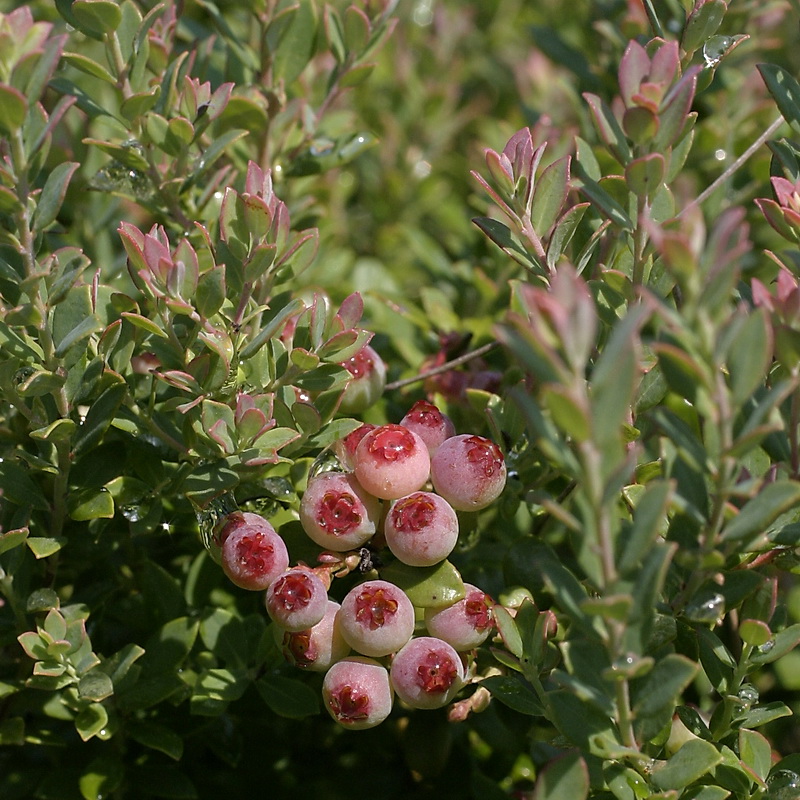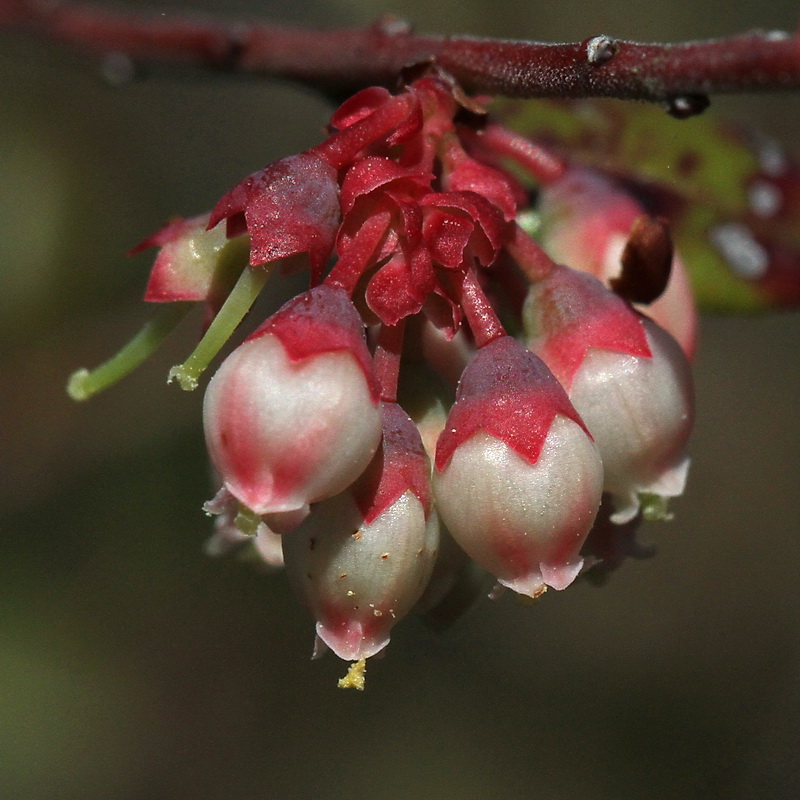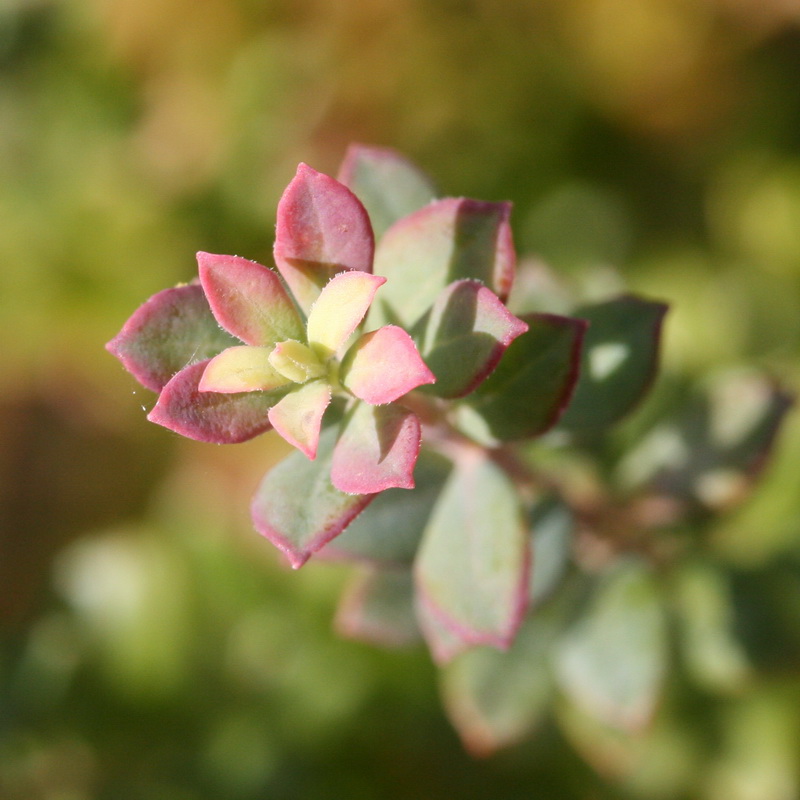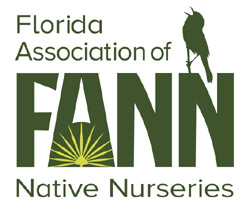Vaccinium darrowii
Photographs belong to the photographers who allow use for FNPS purposes only. Please contact the photographer for all other uses.
Darrow's Blueberry
Ericaceae
Plant Specifics
| Form: | Shrub | |
| Size: | to 2 ft tall by about 2 ft wide-spreading by rhisomes to form clones typically up to about 50 ft wide. | |
| Life Span: | Long-lived perennial | |
| Flower Color: | White,pink | |
| Fruit Color: | Blue,purple,black | |
| Phenology: | Evergreen. Blooms in early spring. Fruits ripe in late spring. | |
| Noted for: | Showy flowers, Showy fruits, Interesting foliage |
Landscaping
| Recommended Uses: | Low hedge or border plant, specimen plant in a wildflower garden, mass planting. | ||||||||||||||||||||||||||||||||||||||||||
| Considerations: | Must have acidic soil. | ||||||||||||||||||||||||||||||||||||||||||
| Propagation: | Seed, softwood cuttings, and division. | ||||||||||||||||||||||||||||||||||||||||||
| Availability: | Native nurseries | ||||||||||||||||||||||||||||||||||||||||||
| Light: | Full Sun, Part Shade | ||||||||||||||||||||||||||||||||||||||||||
| Moisture Tolerance: |
always floodedextremely dry |
||||||||||||||||||||||||||||||||||||||||||
| (Somewhat moist, no flooding ----- to ----- Not wet but not extremely dry) | |||||||||||||||||||||||||||||||||||||||||||
| Moisture Tolerance: | Somewhat moist, no flooding ----- to ----- Not wet but not extremely dry | ||||||||||||||||||||||||||||||||||||||||||
| Salt Water Flooding Tolerance: | Not salt tolerant of inundation by salty or brackish water. | ||||||||||||||||||||||||||||||||||||||||||
| Salt Spray/ Salty Soil Tolerance: | Low/no tolerance of salty wind or direct salt spray | ||||||||||||||||||||||||||||||||||||||||||
| Soil or other substrate: | Sand | ||||||||||||||||||||||||||||||||||||||||||
| Soil pH: | Acidic | ||||||||||||||||||||||||||||||||||||||||||
Ecology
| Wildlife: |
Birds and other wildlife consume the fruit. | |
| Insects: | Attracts various pollinators, especially native bees. Documented bee species include Agapostemon splendens, Augochlorella aurata, A. gratiosa and Apis mellifera (honeybee) (Deyrup et al. 2002). | |
| Native Habitats: | Moist sites. Flatwoods, scrubby flatwoods. |
Distribution and Planting Zones
Natural Range in Florida
USDA Zones
Suitable to grow in:
10A 8A 8B 9A 9B
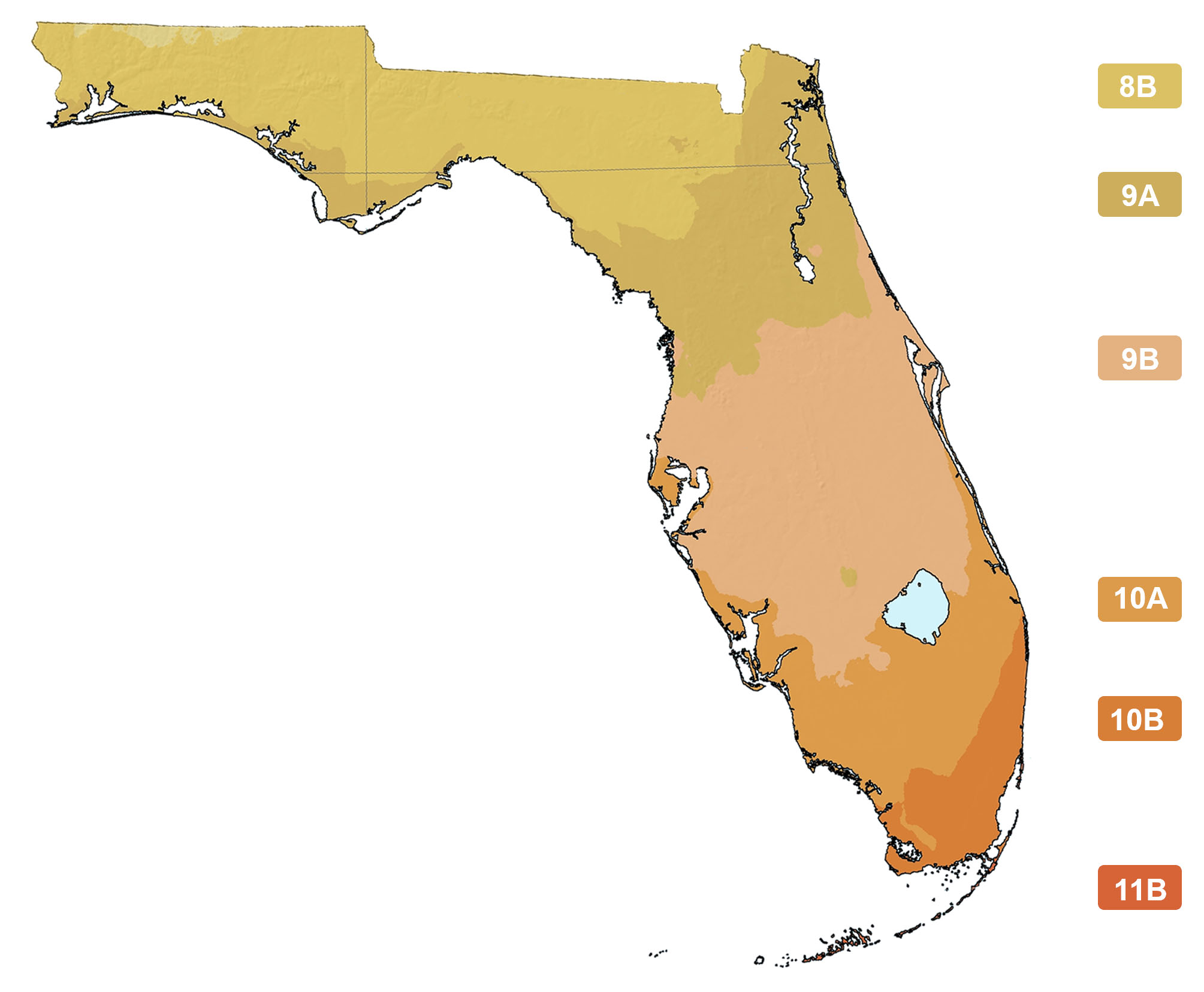
USDA zones are based on minimum winter temperatures
Comments
| Ethnobotany: | Edible fruits. | |
| General Comments: | Leaves are glaucous and appear to be blue-green sometimes with pink-violet overtones. The range includes the Florida panhandle and much of the penninsula. Based on BONAP and IRC herbarium specimen maps, it extends north into southern Georgia, Alabama, and Mississippi. It is likely absent or of very sparse occurrence in northeast Florida and southeast Georgia, and southeastern Florida. |
